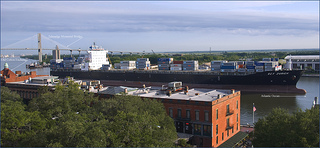 Annual operating costs for the container shipping industry rose in 2011 compared to the preceding year, propelled largely by greater crew spending, according to the latest findings of a London-based shipping consultancy.
Annual operating costs for the container shipping industry rose in 2011 compared to the preceding year, propelled largely by greater crew spending, according to the latest findings of a London-based shipping consultancy.
Moore Stephens’ new “OpCost 2012” report said that operating costs for container ships inched up by 3.1 percent, or 5 index points, in 2011 from a year ago. In 2010, Stephens reported a rise of 3 points for the sector.
Crew costs accounted for the bulk of the increase, with spending on labor rising 3.4 percent on average year-on-year (as opposed to 2.9 percent in 2010). Smaller vessels—those with a capacity of up to 1,000 20-foot-equivalent units (TEUs)—paid 3.9 percent more than they did last year.
“OpCost 2012 contains both good and bad news for the shipping industry. The bad news is that costs continue to rise. The good news is that costs are not rising as fast, or as steeply, as they were three or four years ago, and are in fact pretty much in line with predictions,” said Moore Stephens partner Richard Greiner.
“Once again, it was an increase in crew costs which was the headline figure for the industry in 2011… But while crew costs remain the single biggest contributor to higher operating costs, they are still modest in comparison to some of the hefty increases posted in earlier years. Investing in good people is a must for the shipping industry, and will justify the price tag in the long term.”
Spending figures for repairs and maintenance also showed an uptrend, rising 3.7 percent on average. Box vessels up to 1,000 TEUs spent 3.2 percent more this year than a year ago, while those between 1,000 and 2,000 TEUs shelled out 1.5 percent more.
Meanwhile, expenditure figures in insurance were mixed. The larger box ships paid 0.7 percent less in 2011 year-over-year, smaller container ships paid 3.5 percent more.
“The global economic outlook remains uncertain,” Greiner said. “Shipping will not welcome an increase in operating costs. But there should be some solace to be had from confirmation that the increases are more or less in line with predictions. In shipping, as elsewhere, it is easier in difficult times to plan for a probability than for an unexpected contingency. And better analysis and risk management makes an unexpected contingency less likely.”
Photo: Ron Cogswell




